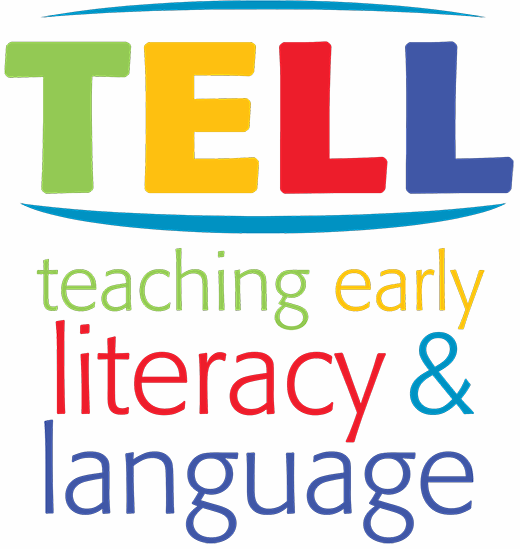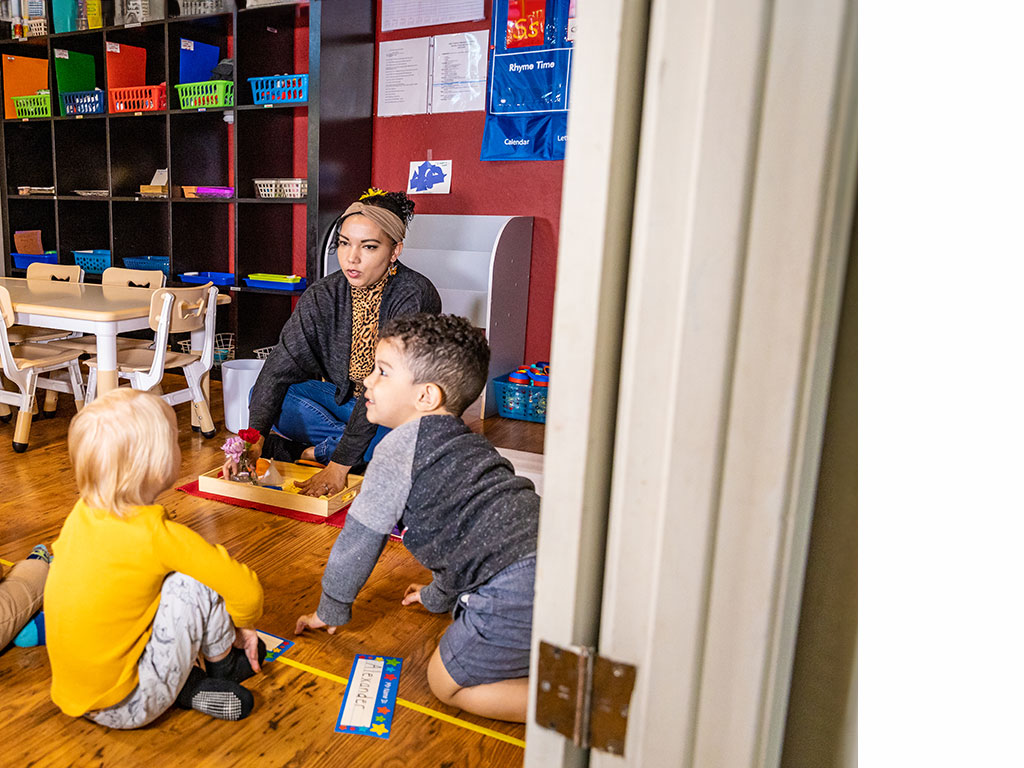
Research
Teaching Early Literacy and Language Curriculum

Contact us
The need for high-quality preschool curricula
TELL was developed to meet the needs of all preschoolers based on research findings about the need for high-quality preschool curricula and known characteristics of high-quality preschool programs.

Achievement gap
It is widely acknowledged that preschool children with disabilities lag behind their peers in reading skills. Further, there are sustained and persistent achievement gaps in the reading skills of children from more- versus less-advantaged backgrounds (NAEP, 2019). Over the past 20 years gaps between poor White students and their poor Black and Hispanic peers grew (Paschall, Gershoff & Kuhfeld, 2018).
Promise of preschool
Preschool can have positive, long-lasting effects for all children (Bai, Ladd, Muschkin, Dodge, 2020; Hahn & Barnett, 2023; Hahn & Barnett, 2023; Purugganan, 2018).
Promise of high quality preschool programs
All children benefit from exposure to high quality preschool experiences and programs but a high quality program is essential to achieve maximum effects for young children with disabilities. In addition, children living in poverty may benefit more from high-quality preschool programs than their peers from higher SES families.
Characteristics of high-quality preschool programs

Responsive teaching and high quality environment
Offer a variety of learning opportunities.
Implementation of empirically-based curricula
Include sufficient ‘active ingredients’ to positively impact children’s language, literacy, social, and cognitive skills.
Differentiated instruction
Teaching matches children’s developmental levels.
Effective professional development
Aligned to desired child outcomes (Pianta et al., 2009).

Results from TELL randomized controlled trials
TELL efficacy has been tested in three randomized controlled trials, a rigorous method for examining cause-effect relationships between an intervention (curriculum) and outcomes. Read an abstract from these published studies or access the full papers by searching for the DOI address.
Efficacy of the TELL language and literacy curriculum for preschoolers with developmental speech and/or language impairment.
Wilcox, Gray, Guimond, & Lafferty (2011). https://doi.org/10.1016/j.ecresq.2019.10.005
TELL was originally developed to improve the oral language and early literacy skills of children with developmental speech and/or language impairments, a group of children at risk for future reading problems (Catts et al., 2015; Hayiou-Thomas et al., 2017; Hulme et al., 2015; Snowling et al., 2016). As part of the development process, a small pilot randomized controlled trial (RCT; n = 29 classes) was conducted to compare outcomes of 4-year-olds in their prekindergarten year who were children diagnosed with developmental speech and/or language impairment in TELL classrooms to their peers in BAU control classrooms (Wilcox et al., 2011). We found significantly higher pre- to posttest gains in both oral language (Cohen’s d =0.39–0.82) and early literacy skills (Cohen’s d =0.53– 1.08) in favor of children enrolled in TELL classrooms.
Preschoolers with developmental speech and/or language impairment: Efficacy of the Teaching Early Literacy and Language (TELL) curriculum.
Wilcox, Gray, & Reiser (2020). https://doi.org/10.1016/j.ecresq.2019.10.005
More recently, we completed a larger cluster RCT efficacy study (n = 91 classes), with preschool children diagnosed with developmental speech and/or language impairments (N = 318; Wilcox et al., 2020). Teachers were randomly assigned to implement the TELL curriculum or BAU teaching. Procedural fidelity to the planned TELL curriculum was high. We administered proximal, experimenter-created curriculum-based measures (CBMs) 6 times over the school year and more distal pre–post mea-sures of oral language (Clinical Evaluation of Language Fundamentals Preschool–Second Edition [CELF Pre-school-2]; Semel et al., 2004) and early literacy skills (Test of Preschool Early Literacy [TOPEL]; Lonigan et al., 2007) as well as a bench-marked early-literacy assessments (Phonological Awareness and Literacy Screening for Preschoolers [PALS PreK]; Invernizzi et al., 2004). Based on results from growth curve analyses, we found a signifi-cant between-groups effects in favor of TELL for all CBM measures by the spring semester (Cohen’s d = 0.43– 1.25). We also found a significant TELL advantage for posttest measures of vocabulary with small to medium effect sizes; however, there were no significant differences on distal measures including the CELF Preschool-2, the TOPEL, or the PALS PreK.
Efficacy of the Teaching Early Literacy and Language Curriculum With Preschoolers From Low-Income Families.
Gray, Wilcox, & Reiser (2024). https://doi.org/10.1044/2024_LSHSS-23-00140
In our newly published study, we tested the efficacy of TELL for improving the early literacy and oral language skills of preschoolers from low-income families.
In a randomized controlled trial (RCT), TELL was implemented in 30 TELL and 28 business-as-usual classrooms.
Implementation fidelity was high; however, due to COVID-19 school closures, we did not collect end-of-year data for our third cohort of teachers. Results indicated significant TELL effects on all code-related curriculum-based measures (CBMs) and two code-related distal measures as well as receptive and expressive vocabulary CBMs. No significant differences were found on distal measures of oral language/vocabulary or listening comprehension.
Results of this study, paired with findings from the earlier TELL RCT with children with developmental speech and/or language impair-ments, suggest that children enrolled in TELL classrooms achieve higher out-comes on a variety of code-related and vocabulary measures by the end of their final preschool year.